By Colonel Wayne Murphy, PhD, PE, Hue, Vietnam
Part II
The Vietnam War was mistakenly fought using draftees and soldiers with fixed individual one year tours. Reserve units for the most part were not called up for active duty like today, and the National Guard and Army Reserve became another haven for those trying to avoid service. Johnson and MacNamara apparently did not want to disturb the home front. 18-20 year olds did not vote and did not have much of a lobby.
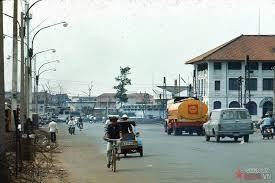
Unit cohesion was hard to maintain. Each guy knew his DEROS (date expected rotation from overseas), and some even penned them on their camouflage covers. We fell in on the equipment and battalion colors and were “the men” for only a period of time. We had some “lifers” who were in their second or third tours, but usually with a unit new to them also. For the most part “experience” was defined as being in country for a few months.
Today the Army deploys as units. But in 1970 about a third of a platoon was always new guys (“cherries” or FNGs (F*&%$ New Guys)), a third was in mid tour, and a third was getting short. Your attitude changed with time. As a “cherry” you were frightened and were looked down upon by the “vets”. As a “short timer” you were frightened and only wanted to make it out. In between for about ten months you were resigned. The sayings troops used constantly were “there it is, breeze” and “sorry ‘bout that” which were reflections of our resignation and fateful outlooks.
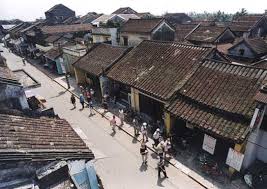
At SERTS (Screaming Eagle Replacement Training School) we were issued gear and went through a week of airmobile training – after all the 101st was now the other airmobile division (1st Cav being the first). For me it was mostly refresher as Ranger School covered most of it. We were “slung” beneath UH1 Hueys (called “slicks” by troops), climbed down nets from CH47 Chinooks (called “hooks”), and rappelled from slicks.
Slicks carried 6 to 8 troops with full gear seated on the floor. There were no seats except ones for the door gunners and crew, no doors, and no seat belts. If they hit an air pocket you could go right out. We held on to the same tie down rings we used to secure the ropes for rappelling. On assaults the birds did not always touch down and we sat in the doors with our feet over the skids as we approached an LZ. The skids actually bent under the bird in flight, splaying out a bit under the weight of the aircraft on a full landing. You jumped out as the bird made contact or slowed near the ground.
Later I would learn the 326 Engineer techniques. When we rappelled out where there was no LZ cleared, we used “Swiss seats” made from a rope and clamp and repelled down in big “bites” of the line to minimize exposure to any fire from about 125 feet. When we did so to cut out some downed pilot or clear an LZ we also lowered chain saws and explosives. We usually made LZs on a hill top, so we would send half the guys to set charges on big trees and half to cut the smaller stuff on the other side. When ready we would all move to the “safe side” of the hill and blow the trees; then we would reverse the teams. Most of our area of operations (AO) in the 101st had an LZ already cut in every 1km square, created in the previous year in operation “Life Saver.”
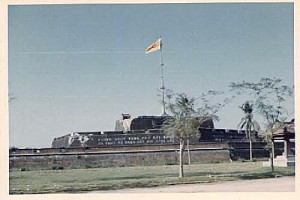
We learned about SOPs (standard operating procedures) for the 101st , including smoke grenade SOP. You could pop any type color to ID your position or LZ except red. Red meant danger and engineers popped it before we set off explosives to warn choppers in area. When a chopper was trying to locate your position (to land, take out a casualty, or direct fire) you popped smoke. He then came back on the radio with the color he saw and you confirmed it. That way the gooks could not trick them. There was “goofy grape”, “alligator green”, “lemon yellow”, etc. The makers of Kool Aid did play a role in the process for our generation.
We did rappelling training with some ARVN (Army of the Republic of Vietnam) troops during my week. They were Hac Bau or black panthers (Vietnamese rangers). They were little men and very slight in build. Their NCOs were really hard ass. When one soldier apparently refused to rappel from the tower, his NCO put his foot in his chest and literally launched him toward the ground. In any case they appeared pretty good troops, but then again these were their elite.
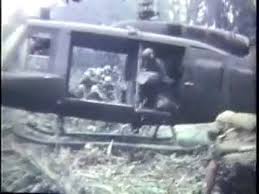
We also had to take turns at night on the bunker line – the periphery of the base at Camp Evans. The base had elaborate wire and obstacles and interlaced bunkers and was pretty safe. One night I recall a “cherry” soldier freaking out at what he thought were sappers, throwing grenades into the wire. The next morning there were grenades all over the place, but they all had their pins still in and had not gone off.
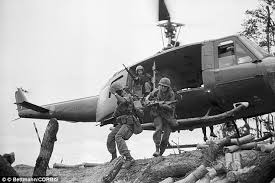
On another night a “cherry” troop, who was so frightened at being in country, decided to wound himself in the toe using his M16 rifle to get sent home. The M16 round had great velocity and when the round hit it literally blew up the flesh. A demo in training was the shooting of a metal ammo box filled with water with an M16 and then an AK47. The AK round went through the case and made large holes. The M16 caused the box to explode. This was designed to give us confidence in our weapon over theirs. This guy forgot that lesson and really screwed up his whole foot.
SERTS also had a class for NCOs and Officers on drugs. The problem was pretty bad in 1970 in most units. The NVA reportedly was funneling cocaine and marijuana in to the area at rock bottom prices, and our troops, especially those in the rear, were taking advantage of the sales. In 1970 for $5 a troop got a vile filled with cocaine powder – and pretty strong stuff. Pot was everywhere. We were required to pass around samples to recognize the smell and taste. Anyone who ever went to a pop/rock concert knew the smell, but the 101st wanted the leadership informed. The joke was the troops had their dope, the NCOs had their booze, and the officers their porn.
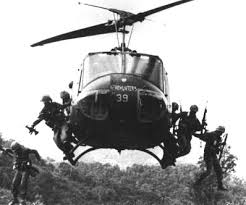
The final exercise at SERTS was a patrol outside the wire. We were loaded on slicks and made a combat assault (CA) into a landing zone (LZ) not far from camp. From there we hiked back in infantry formation through some fields to Camp Evans. It was a safe area, but we were not so sure and took it very seriously.
During my tenure at Camp Evans we did visit an “O Club”. It was like West Point East. I met Bill Taylor (he would be BG Sid Berry’s aide, and in later years the number two guy on civilian side in the Iraq War; he also became Ambassador Taylor to a former Soviet state), Claude Alexander (who would lose a leg in Vietnam and become a real mentor for Iraq wounded at Walter Reed before he died from injuries sky diving at 62), Bob Seitz, Ralph Crosby, and others. I discussed the latest news on Bill Pahissa with Bill Taylor. We agreed the news was terrible but somehow it changed our attitude. What would happen would happen and worrying would not make things better. I mentally got over the new guy jitters.
We packed up and were again trucked in cattle cars to Camp Eagle and I arrived finally at the 326th Engineer Battalion. I was a 1LT, having been promoted on June 4 at the one year mark in VA. The need for officers at company level was so great in the Army that we made 1LT in a year and CPT the next. Little time was available to be with a platoon. In Vietnam the war was mostly fought at Infantry battalion level and below. Most actions were at platoon level. Engineer companies in a division supported brigades, with platoons farmed out to infantry battalions. Really, most combat for engineers was at the LT level, and I looked forward to getting a platoon.
An excerpt from an unpublished work called “Pop’s War”.
Leave a Reply